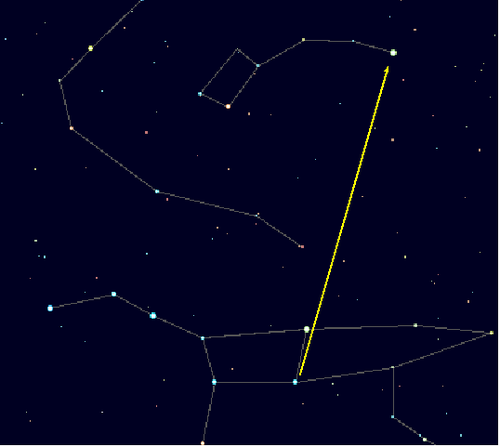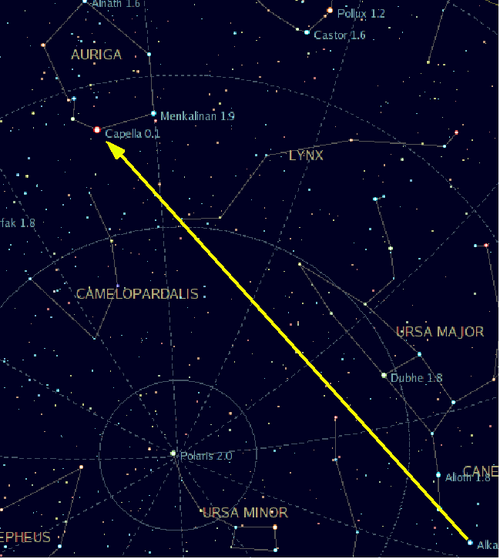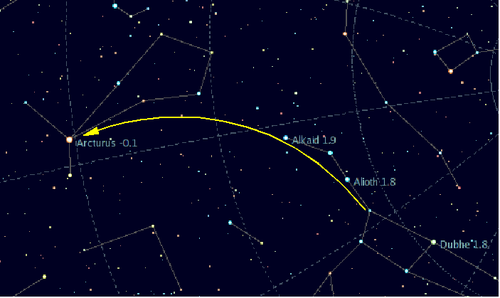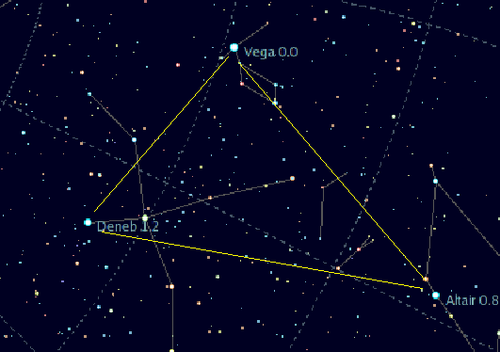AY Honors/Stars/Answer Key 2
Template:Honor desc Template:Honor Master
|
Investiture Achievement Connection: This Honor is related to the Investiture Achievement requirements for EXPLORER Nature Study which require completing Requirement 9 and 12 of this Honor. Therefore this Honor is a popular choice for the Skill Level 2 or 3 Nature Honor required for WILDERNESS EXPLORER. |
1. Answer the following questions:
a. What is the earth's nearest celestial neighbor? What is its distance from the earth?
Adventist Youth Honors Answer Book/Stars/Nearest neighbor
b. What governs the tides?
The tides are governed by the Moon, and to a lesser extent, by the Sun.
c. What causes an eclipse?
An eclipse is caused when the Sun, Earth, and Moon are in a direct line with one another. When the Earth is between the Sun and the Moon, we see a lunar eclipse, which is the Earth's shadow falling on the moon. When the Moon is between the Sun and the Earth, we see a solar eclipse, which is when the Moon's shadow falls on the Earth (blocking the Sun).
d. What is a shooting star?
A shooting star is not a star at all, but rather a meteor. A meteor is any celestial body (usually quite small) that falls to the Earth. Most burn up in the atmosphere before reaching the surface, leaving a bright, short-lived streak in the sky.
e. How fast does light travel? How far does light travel in a year?
Light travels at 186,000 miles per second (not miles per hour), which is 300,000 kilometers per second. In one year, light will travel 5.88 trillion miles (9.4 quadrillion km). This distance is also called a light-year.
For more information on meteors, check out the honor Meteorites.
2. Make a diagram showing relative positions and movements of the earth, sun, and moon. Show positions and area events for eclipses of the sun and moon.
One may demonstrate by using an orange, walnut, and marble, or similar objects, to show positions and movements of the earth, sun, and moon when there is an eclipse of the sun and when there is an eclipse of the moon.
Place the "sun" model in the center. Place the "earth" some distance from the sun, and show how it travels in a near circle around the sun. The moon travels around the earth, but it always shows the same face to the earth (it's rotation on its axis takes the same amount of time as its orbit around the earth.
3. Make a diagram of our solar system and be able to name the planets in order from the sun.
Adventist Youth Honors Answer Book/Stars/Planets
4. Identify in the sky eight fixed stars. What is the difference between planets and fixed stars?
The word planet means wanderer because the planets appear to wander about the sky relative to the stars. The stars do not move in relation to one another (although they all appear to move together because of the Earth's rotation on its axis).
Which eight stars you choose to teach your Pathfinders to identify will depend on the season (spring, summer, winter, or fall), although some stars are visible year-round.
Stars visible in the Northern Hemisphere
Polaris
Polaris is one of the most useful stars for a person in the Northern Hemisphere to be able to identify, as it can tell you two things: which way is north, and what is your latitude (if your latitude is 38°, Polaris will be 38° above the horizon).
Capella
Capella can be found by following the line made by the two stars in the Big Dipper's handle and extending it across the Dipper's bowl.
Arcturus
Arcturus is the brightest star in the constellation Boötes, and the third brightest star in the night sky. Arcturus can be found in the summer by following the arc made by handle of the Big Dipper (away from the dipper's bowl).
5. What is a constellation? Name and point out six. Name two constellations visible throughout the year.
A constellation is any one of the 88 areas into which the sky - or the celestial sphere - is divided. The term is also often used less formally to denote a group of stars visibly related to each other in a particular configuration or pattern.
- Ursa Major
- Ursa Major is better known as the Big Dipper. It appears in the north and is fairly easy to identify. It is illustrated in a previous requirement.
- Ursa Minor
- Ursa Minor is better known as the Little Dipper. Use the instructions given previously for finding Polaris, which is the end of the Little Dipper's handle. Unfortunately, the stars that make up Ursa Minor are relatively dim, making this one a bit more difficult to find.
- Cassiopeia
- Cassiopiea is illustrated in the next requirement and is generally visible (at some time during the night) all year round. It is on the opposite side of Polaris from the Big Dipper.
- Boötes
- Instructions for finding Arcturus, and thus the constellation Boötes are given in a previous requirement.
- Cygnus, Altair, and Lyra
- These are easily identified summer constellations. The brightest stars in each of these three make up the Summer Triangle. Once the stars are found, it is easy to find the constellations they are part of. Vega is the brightest star in the Summer Triangle, and it is a member of the constellation Lyra. Cygnus is also known as the Northern Cross. The triangle is completed by Altair which is a member of the constellation Aquila.

The Winter Circle is made up of several bright stars visible in the Northern hemisphere's winter. The easiest constellation to find in the Winter Circle is Orion. Following Orion's belt will lead to Sirius, the brightest star in the sky and a member of Canis Major (the "big dog"). Canis Minor (the "little dog") is clockwise from Sirius. Continuing clockwise, we come to Gemini, Auriga, and Taurus.
The constellations that are visible throughout the year are the ones near the celestial poles: Adventist Youth Honors Answer Book/Stars/Constellations visible all night
6. For the Northern Hemisphere: draw a chart of the Big Dipper, Cassiopeia, and the North Star. For the Southern Hemisphere: draw a chart of the Southern Cross, Orion and Scorpio.
Adventist Youth Honors Answer Book/Stars/Big Dipper, Cassiopeia, and the North Star
Adventist Youth Honors Answer Book/Stars/Southern Cross, Orion and Scorpio
7. What is the Milky Way? Observe the Milky Way in the night sky.
A large gathering of stars and bodies making up one of many galaxies. The portion visible in the night sky of Earth is only a single dimensional or flat view of the galaxy as our solar system is part of the same galaxy we have lack for a broader perspective.
8. What is the morning star and evening star? Why does it carry both names? Observe the morning and evening star in the sky.
This is not a star at all but the Planet Venus and draws in part its modern status as the Morning Star and Evening Star from mythology. Venus never appears on the opposite horizon from the sun due to its relative location to the sun and Earth. Mercury too fits this profile but is rarely actually visible.
9. Explain zenith and nadir.
Zenith is the point in space directly overhead. If you extend a line from the zenith to the point on Earth upon which you are standing, and continue that line through the Earth and out the other side, it would point to the nadir. In other words, nadir is the direction pointing directly below a particular location. The line connecting the zenith and nadir passes through the point on Earth where you're standing and also passes through the center of the Earth and out the other side.
10. What is the aurora borealis? What causes it?
An Aurora is a beautiful natural phenomenon that often occurs in the polar regions of Earth.
The immediate causes of aurora are precipitating energetic particles. These particles are electrons and protons that are energized in the near geospace environment. This energization process draws its energy from the interaction of the Earth's magnetosphere with the solar wind.
References
International Astronomer's Union [1]
Notes
On August 24, 2006 the International Astronomers Union, a non-governmental entity, reclassified Pluto giving it the status of Dwarf Planet. This new classification is based on their updated definition of what a planet is. One reason for the change is because the new definition requires that a planet "dominate" its orbit. Pluto's orbit crosses and is dominated by Neptune. Furthermore, scientists are discovering that the region of Pluto's orbit, which is known as the Kuiper Belt, is similar to the asteroid belt. There are many Pluto-like objects in that region, including one name Eris which is larger than Pluto. This means Pluto is more like an asteroid than it is like a planet.




